How to Prevent Parking Lot Flooding
If you’ve ever had to design a parking lot or have one installed somewhere, you know drainage is almost always a large part of the process.
Parking lots are often made from impermeable materials like asphalt and concrete, which means that they do not let water pass through them and require additional measures to deal with stormwater and runoff. For lots with low points where water can pool, having a drainage system in place is vital to maintaining a functional and safe parking lot.
There are many ways in which parking lot owners can choose to manage their drainage, but not all of them are equally effective or viable. In order to help you design the cleanest, most functional lot possible, let’s take a look at how you can prevent parking lot flooding.
Flooding is a Major Issue in Parking Lots
Flooding is obviously less than ideal in a parking lot, but it can cause more issues than you might realize. First, flooding can speed up the deterioration of your lot. When standing water is left in a parking lot, it can infiltrate the surface of your lot and quickly cause deterioration.
Water causes erosion and can wash away subsurface soil, leading to ruts, potholes, and even massive sinkholes if left unchecked. It can also widen cracks in the parking lot surface if exposed to freeze/thaw cycles.
Liquid water fills the cracks in the surface of a lot, then expands and widens those cracks when it freezes. Once it unfreezes, the now widened crack is filled with even more water, and the cycle repeats itself until the cracks penetrate the surface and let water into the subsurface.

Water damage creates more frequent maintenance expenses, which are not cheap. Also, standing water can present a health threat to people who use your lot. Someone may accidentally suffer an injury as a result.
Ruts and potholes will also damage the suspension and axles of the vehicles that drive over them as well.
Parking lot flooding presents an unsightly, run-down, unprofessional image for your lot. This gives a bad impression and could cost you business if someone is turned off by the look of your lot or the thought of having to navigate through your flooded parking lot.
How to Prevent a Parking Lot From Flooding
There are many ways to deal with parking lot stormwater. The most common is by sloping your lot towards spot drains or trench drains that are connected to a local sewer system that will handle the stormwater. This places a burden on the system, though, and is not very eco-friendly in general.
You may also have a stormwater retention pond on the property where it is funneled, and slowly released into the local sewers. This is very expensive, however.
Permeable Pavement: The Best Way to Prevent Flooding in Your Parking Lot
Preventing parking lot flooding should be one of the first questions on any lot owner’s mind. The solution to the problem is simple, with permeable pavement. Permeable pavers allow stormwater to drain directly through the surface of your lot and into the soil below.
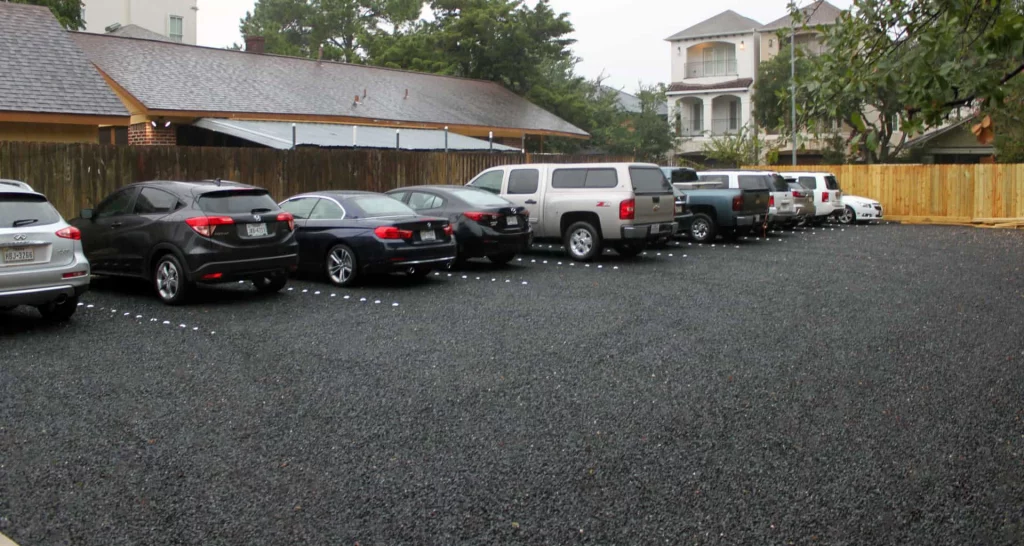
They are one of the most effective and eco-friendly parking lot flooding solutions by far. For example, TRUEGRID PRO LITE and TRUEGRID PRO PLUS pavers are 98%-permeable and can handle the heaviest of rainstorms with ease.
For those of you wondering why the flooding in your lot is ponding, it’s because the pavement is impermeable and the drainage is inadequate. Using TRUEGRID gravel-filled pavers as a parking lot solution will eliminate the need for additional drainage and save you tons of money on maintenance as well.
Asphalt and concrete need to be resealed and resurfaced every handful of years, with most lots not lasting longer than 30 years. TRUEGRID permeable pavement, on the other hand, will last up to 60 years with almost no maintenance required. Made from 100%-recycled plastic, TRUEGRID pavers are the most durable and eco-friendly paving solution on the market.
They can be filled with any color gravel you’d like which provides incredible stylistic diversity. The end result of a TRUEGRID parking lot installation is a professional, functional, clean-cut parking lot that’s completely impervious to flooding.
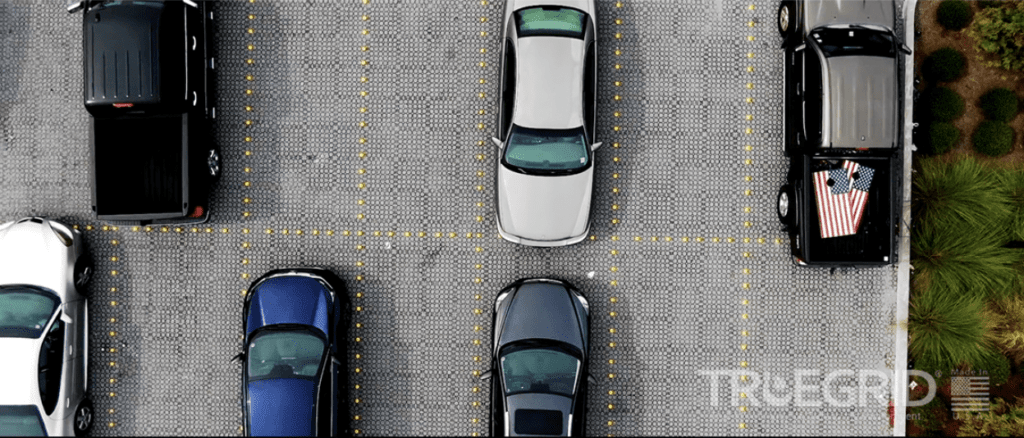
The installation of TRUEGRID permeable pavers is also incredibly fast and can be completed in 1-2 days in many cases. It requires very little heavy equipment and costs less than asphalt and concrete because of how little time and effort it takes. Once in place, these pavers will not shift, buckle, warp, or compromise the functionality of your parking lot in any way.
TRUEGRID Can Eliminate Your Flooding Problems for Good
If you want the best parking lot money can buy, don’t settle for expensive, fragile materials like asphalt and concrete. Instead, build a parking lot that will attract customers and last over half a century. If you want to eliminate parking lot flooding and maximize the value of your lot, call TRUEGRID today to get in touch with a pavement professional who can help you get started.
The use of permeable pavement has been around for a long time. Wherever there’s a want or a need for the flow of stormwater directly through a paved surface as opposed to relying solely on additional drainage systems and sloping, permeable pavement is a great solution.
One type of permeable pavement that’s been popular lately is pervious pavement. Pervious pavement differs from permeable pavement in that it’s not nearly as permeable.
Though the words are sometimes used interchangeably, pervious pavement typically refers to materials such as pervious asphalt and pervious concrete. These are paving materials that are designed to allow for the flow of stormwater directly through the asphalt or concrete, albeit at a much slower rate than a fully permeable material.
Pervious asphalt and concrete can seem like a great way to get the best of both worlds in terms of a paving solution, but they are not without their drawbacks. Let’s take a look at some common problems with pervious asphalt/concrete, as well as a better solution.
What is Pervious Concrete or Asphalt Pavement?
Pervious pavement is intended to be a way for business owners and homeowners to implement a typical concrete or asphalt surface, with the added benefit of built-in drainage. This can be a viable solution for areas that do not expect very much rainfall at all, or areas where there is already another type of drainage system in place and pervious asphalt or concrete pavement is used as a supplement.
This might include a driveway in a low-rainfall area, for example. However, most people would not actually benefit from using pervious concrete or asphalt as much as they might think. For starters, porous concrete and asphalt aren’t all that permeable.
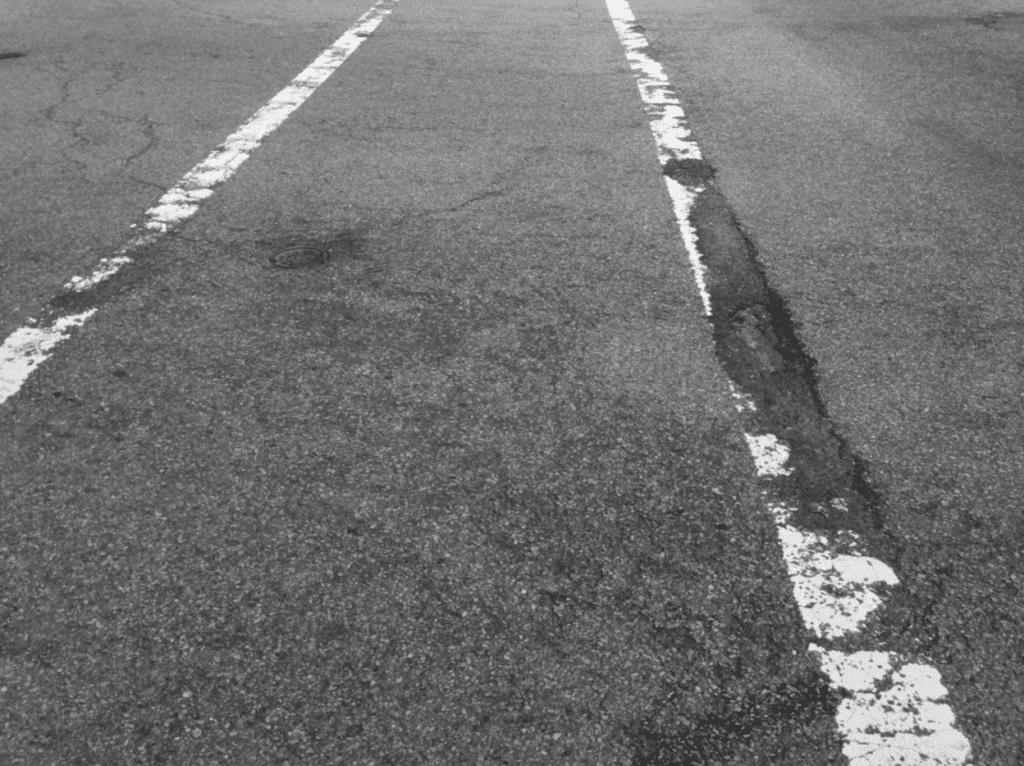
They can handle a slow, light rate of precipitation, but will easily overflow when presented with heavier precipitation. This negates any benefit you would have gotten from the built-in drainage capabilities since the overflow ends up in the same place it would have if you had an impermeable surface in place.
Porous asphalt is also known to clog easily. Because the gaps for liquid to travel through are smaller, pervious pavement can easily become clogged with debris and requires maintenance to keep it clean and clear. It’s also more expensive than regular pavement because of the layered drainage system which typically utilizes an expensive stone filter bed that provides support for the top layer of pavement.
It takes a long time and many pieces of special equipment to install permeable asphalt and concrete as well, which drives up the cost of labor. Not only that, but pervious asphalt and concrete usually only have a lifespan of about 20 years, assuming it’s been perfectly maintained.
Aside from those issues, pervious asphalt is vulnerable to many de-icing chemicals and can be difficult to maintain in the winter. It’s not all that durable and will easily become damaged and worn out under heavy vehicle traffic.
Many permeable asphalt surfaces are also connected to an expensive water storage basin, all in the name of implementing a “typical-looking” paved surface while still achieving some level of inherent drainage.
The Superior Alternative to Permeable Asphalt or Concrete
If you live or work in an area with an average level of precipitation, or you just want a more cost-effective, stylish, and durable pavement solution, you need permeable pavement. Whether you’re building a permeable concrete driveway or a commercial parking lot, permeable pavers have got you covered from all angles.
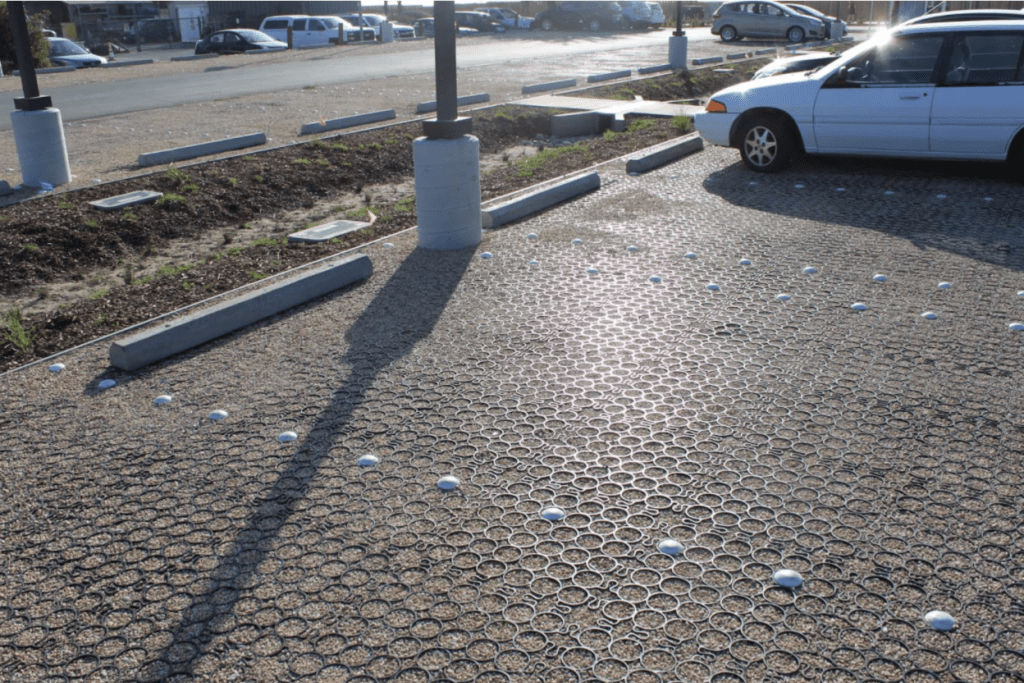
For instance, TRUEGRID PRO LITE and TRUEGRID PRO PLUS are both superior to all types of asphalt and concrete in almost every way. They are much more durable, with a lifespan of up to 60 years and almost no maintenance required.
They’re also more cost-effective because they are 98%-permeable and eliminate the need for any additional drainage systems. They never need to be resurfaced throughout their lifetime, as pervious asphalt and concrete do.
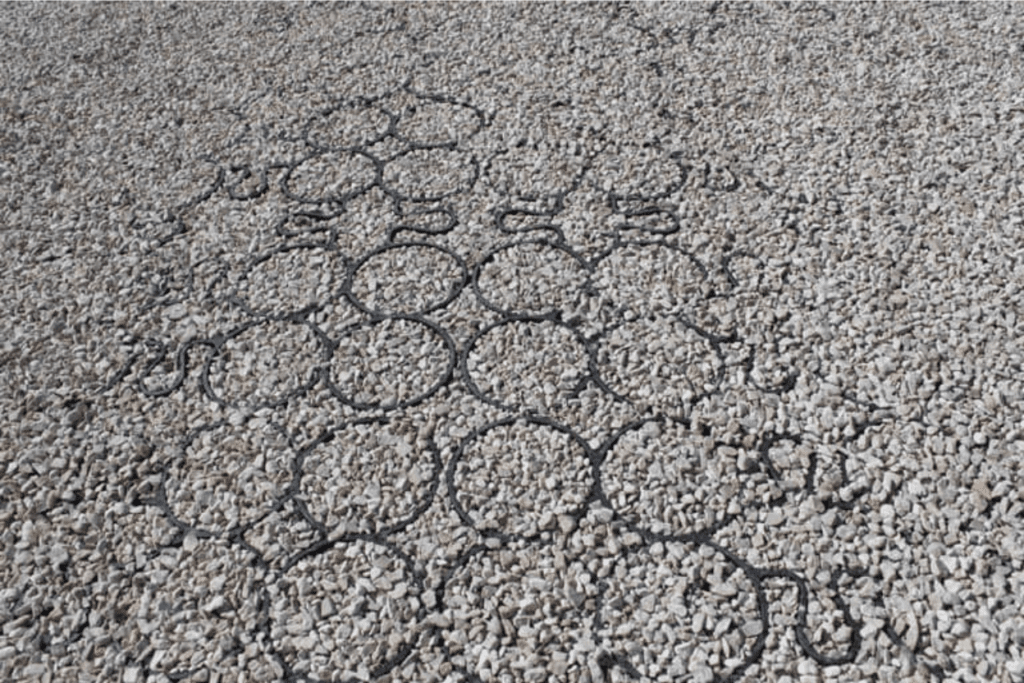
They are made from 100%-recycled plastic, making them both incredibly durable and eco-friendly. TRUEGRID pavers are the best-in-class when it comes to permeable pavement, and are stylistically diverse enough to provide you with many different aesthetics.
Whether you want a clean-cut, professional-looking paved surface, a creative, unique surface, or something in-between, different types of aggregate can be used in your pavers to provide a ton of variability in your design.
TRUEGRID Pavers are Superior to Porous Asphalt or Concrete in Every Way
When it comes to style, ease of installation and maintenance, durability, eco-friendliness, cost-effectiveness, and overall functionality, you can’t do better than TRUEGRID permeable pavers. If you want the best paving option for any situation, call TRUEGRID today to get in contact with a dedicated pavement professional.
There are more big trucks traveling on the roads and highways across America now than ever before. An explosion of businesses have been created over the last 5 years on shipping and delivery exclusively, including the ever-growing need for materials shipped in from all corners of the country and/or planet. 18-wheeler delivery truck drivers are tasked with keeping our shelves stocked and inventory full. This often means driving incredibly long distances on increasingly significant timetables.
Truck drivers are doing all they can to stay on schedule and deliver our goods, but they now face more restrictions than ever. In order to keep accidents at a minimum and keep drivers safe, new laws and restrictions have been placed on how long drivers can stay on the road, as well as where they can park.
It’s now illegal to pull over on the side of the road and sleep in most places, so big rigs are typically forced to either park in commercial parking lots, truck stops, or designated industrial zones within cities. The problem with using these areas for 18-wheeler parking is that the damage they do to normal asphalt and concrete is immense.
The increased maintenance requirements for lots that see a lot of big rig traffic are costing cities and business owners a hefty sum. If you need a lot that can handle 18-wheeler traffic, let’s take a look at why you should choose permeable pavement over asphalt/concrete.
Asphalt and Concrete Aren’t Suited for Heavy Loads
The average asphalt or concrete lot is not well equipped to handle the constant weight of semi-trucks driving on it. The trucks weigh much more than the average vehicle and the weight on the surface of asphalt and/or concrete does a lot of damage over time.
Asphalt will deteriorate very quickly under the weight of semi-trucks, which leads to a lot full of loose gravel. This also makes the lot susceptible to water penetration which can also damage the lot. You will need to resurface an asphalt lot much more frequently if it’s consistently used by big rigs.
Concrete can be reinforced to handle semi-trucks, but it’s very expensive to do. It would take you much longer to get an ROI on a paved concrete parking lot for big rigs than it would if you used a more viable option like permeable pavement.
Is Gravel Paving for 18 Wheeler Trucks a Better Solution?
Because of the constant maintenance required on asphalt and concrete lots that see big rig traffic, the juice is just not worth the squeeze. Reinforced asphalt and/or concrete costs a fortune, and will still need regular maintenance. This has led many to opt for gravel as a big rig parking solution instead.
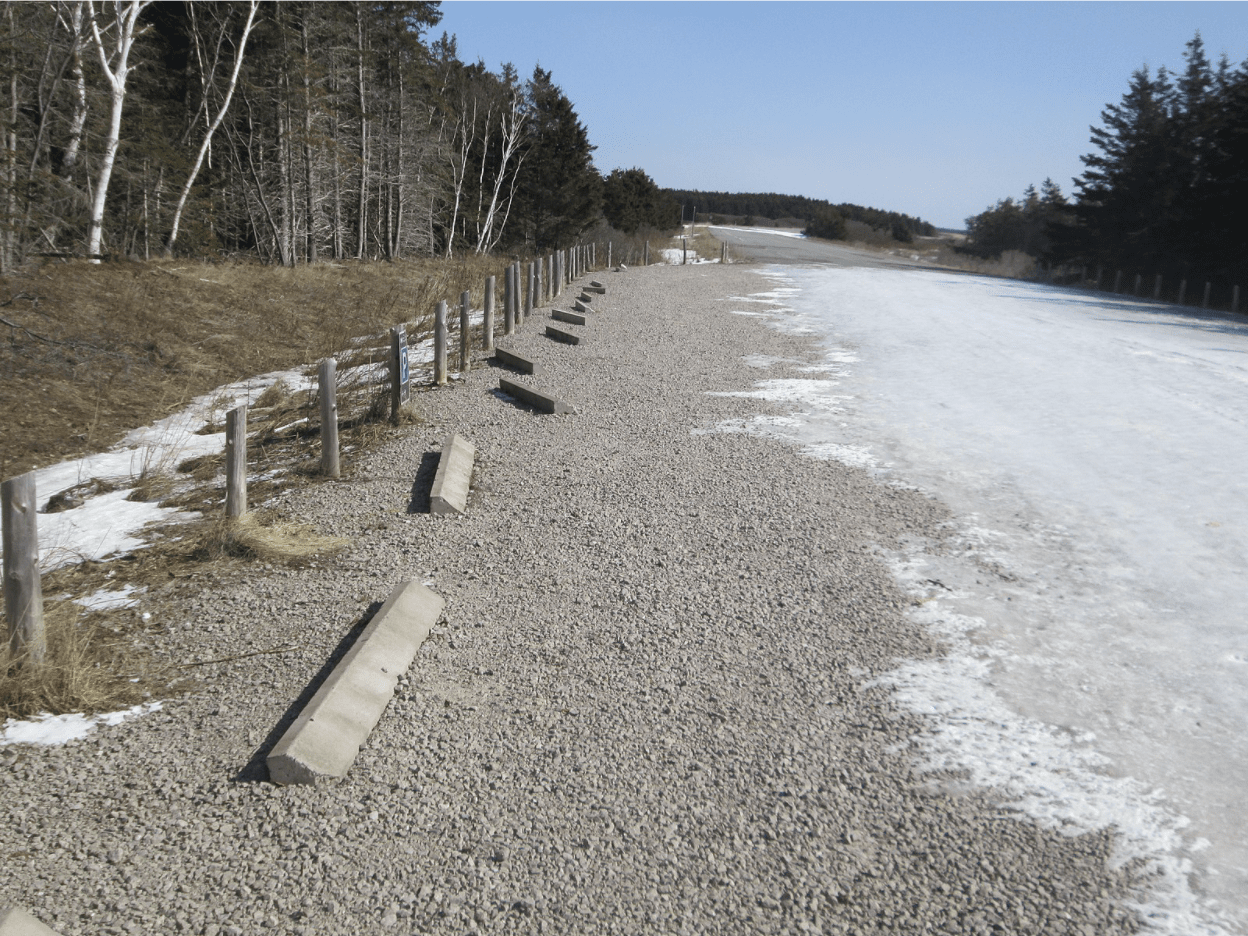
Gravel is so cheap that you can just constantly replace it when needed. It’s also semi-permeable which eliminates the need for additional drainage in many cases. Handling the constant maintenance of a semi-truck parking lot built from gravel can be a huge burden. Stabilized gravel, however, is another story.
Permeable Pavement is Perfect for 18-Wheeler Parking
When it comes to constructing a lot that can handle the weight of semi-trucks with ease, there’s no better choice than permeable pavement. TRUEGRID PRO PLUS, for instance, is the most durable permeable paver on the market and is guaranteed to get you a faster ROI on a dedicated truck parking lot than any other material.
Not only are TRUEGRID permeable paving a much faster install, it costs far less to install, is eco-friendly, provides built-in stormwater drainage, and will last you up to 60 years with almost no maintenance required.
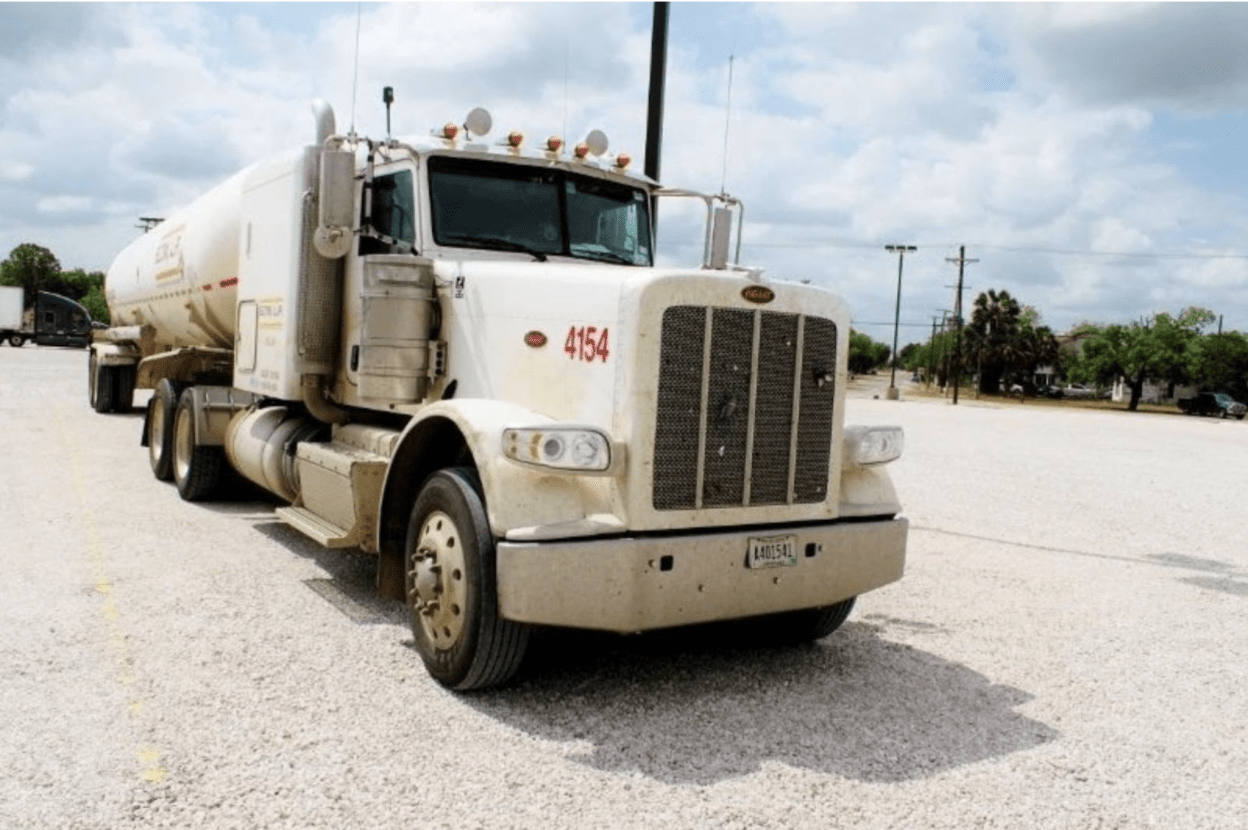
TRUEGRID PRO PLUS pavers are used in conjunction with gravel to create a stable, level, immensely durable driving surface that can easily withstand the weight of semi-trucks. They are so durable that they can handle the weight of a monster truck driving off a ramp and landing on them without breaking, and that’s before they’ve been filled with gravel.
The installation process is very simple and can be completed in a few days’ time for most lots. First, the lot area is excavated to a depth of 8 inches. Then, fabric is laid at the bottom to prevent gravel migration. Next, fill gravel is poured into the pit and compacted, filling it to the top. Then, TRUEGRID pavers are snapped into place just like LEGO blocks over the top of the gravel pit.
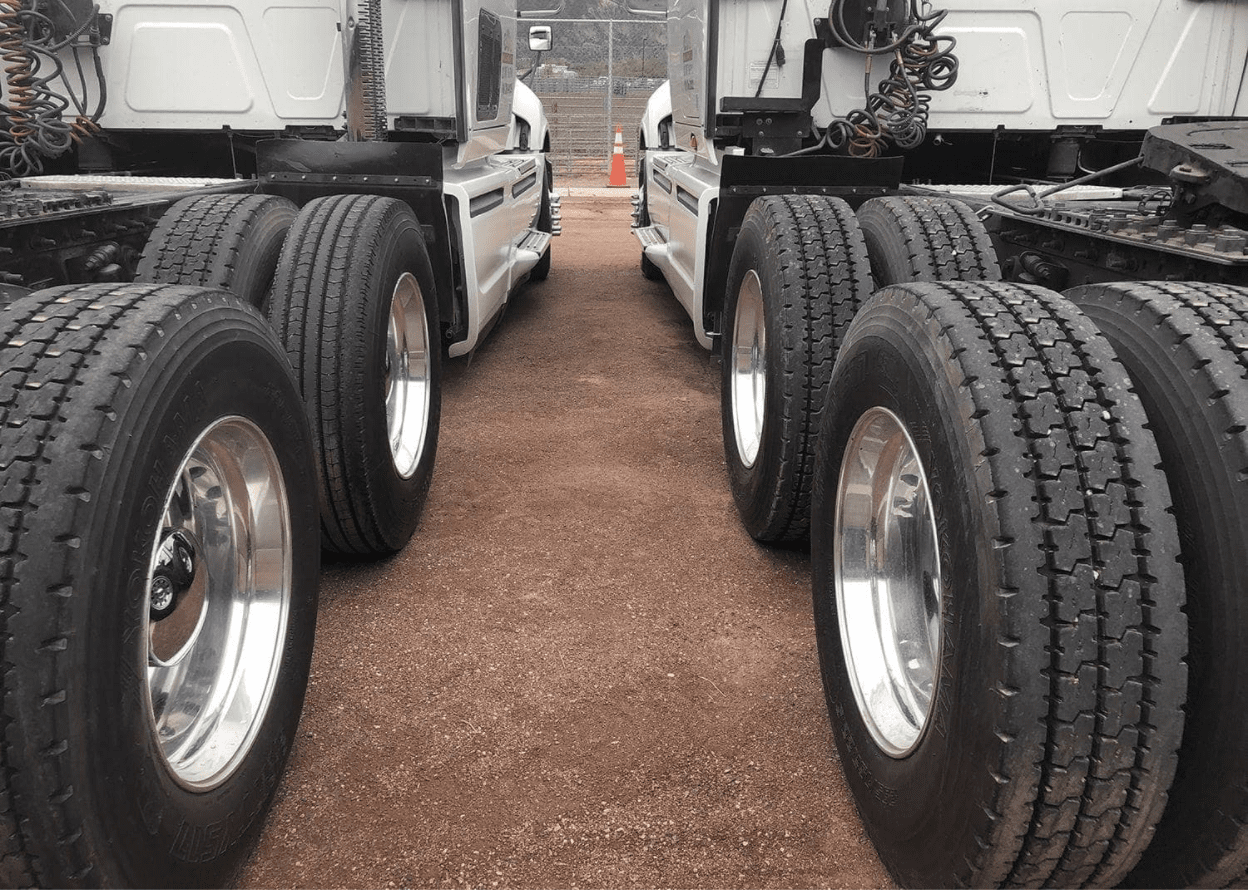
Afterward, more gravel is poured over the top of the pavers and pressed into the empty cells with a heavy vehicle or roller. This completes the entire installation process, making it much less complicated, expensive, and time-consuming than asphalt or concrete
TRUEGRID Makes the Best Pavers for 18-Wheeler Parking Lots
Asphalt and concrete are inferior solutions for big rig parking because they do not last long. Therefore, if you want the best gravel paving for semi-trucks, look no further than TRUEGRID PRO PLUS pavers. They are built to handle heavy vehicles, durable enough to last 60 years with almost zero maintenance, eco-friendly, and stylish to boot.
If you want the best permeable paving option on the planet, call TRUEGRID today to get in touch with a pavement professional.
Building a new patio is an exciting project to take on. A patio gives you outdoor leisure and entertainment options, can provide an outdoor area shaded from the Sun, and is generally a great way to help fill out your yard and add some property value to your home.
5 Compelling Alternatives to Paving a Patio
There are many different methods when it comes to constructing a new patio. For instance, many people prefer to build a patio with paving stones. Concrete, brick, natural stones, and other materials may be used to lay a patio comprised of many individual paving stones.
Some, however, prefer a different approach. From permeable paving to poured concrete and more, let’s take a look at 5 compelling alternatives to paving a patio.
1. Poured Concrete
Most concrete patios are made from either concrete slabs or individual concrete pavers. One way to bypass the time-consuming process of paving a patio with concrete is to have it poured instead.
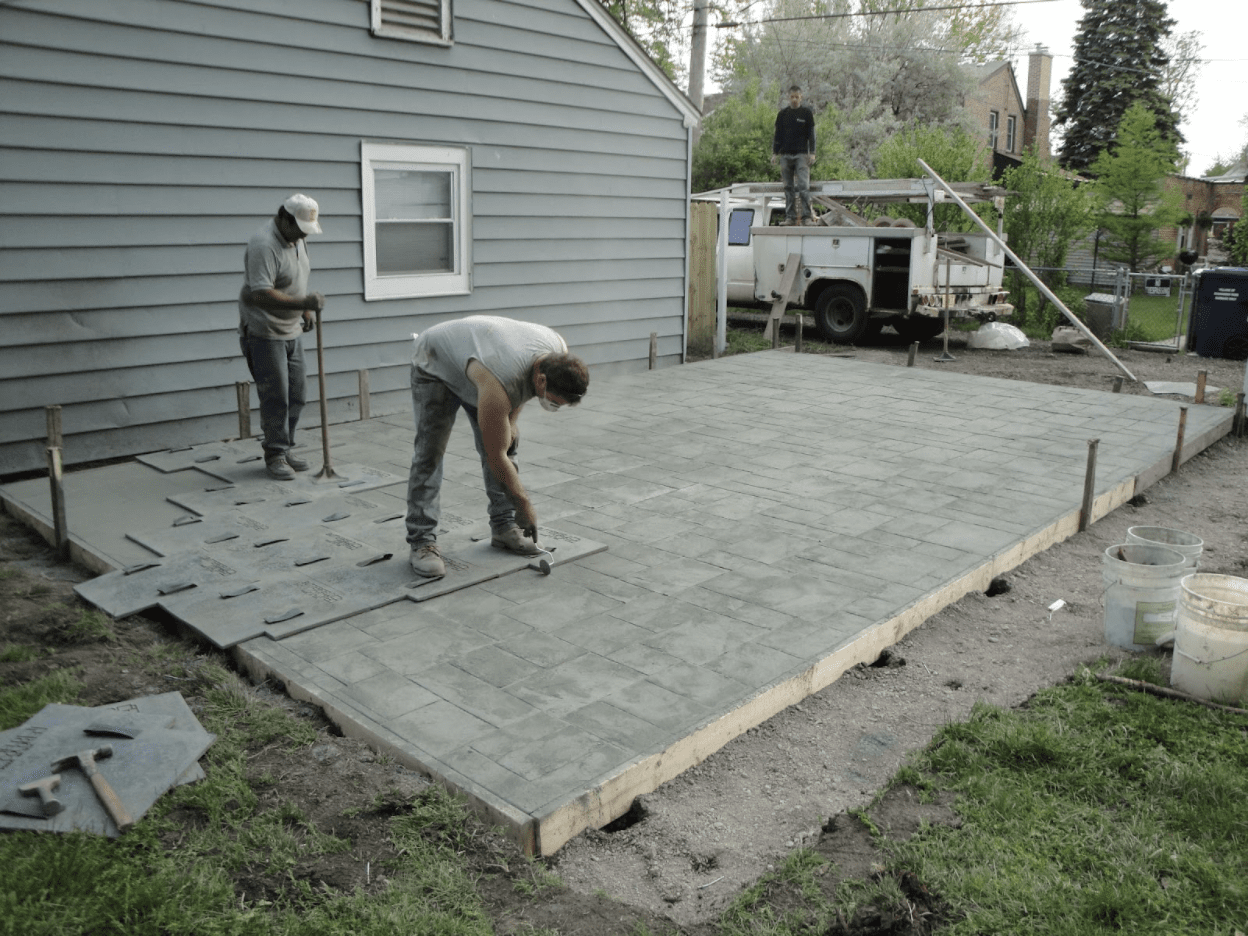
Poured concrete can be completed in one process and doesn’t require the use of slabs or pavers. It can also be stenciled, stamped, and colored to resemble any number of paving materials such as flagstone pavers, granite pavers, and more.
2. Mosaic Tile
One of the most unique and stylish ways to pave a patio is to use wet concrete and mosaic tiling. You can use broken shards of glass, broken tiles, or anything else you can think of to create an incredibly original design that’s sure to catch the eye and dazzle guests.

Mosaic tiling is one of the most time-consuming methods of building a patio, however. For this reason, it can be one of the more expensive ways to build a patio, unless you opt to DIY.
3. Dirt
In some instances, dirt is an exceptional way to pave a patio. In areas that don’t get a lot of rain, like the Southwest U.S., a dirt patio can actually be rather cooling and inexpensive.
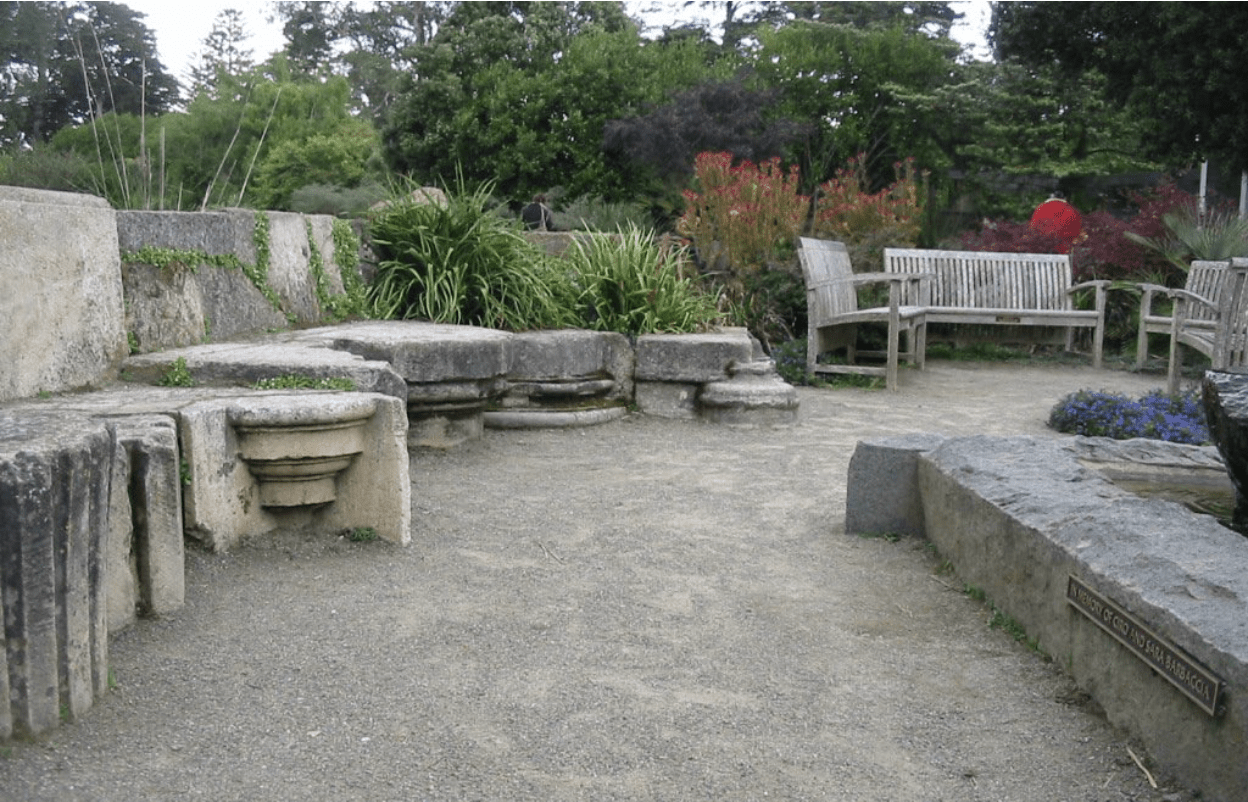
The best way to build a patio design out of dirt is to excavate the patio surface to a depth of a few inches, then use a tamper to pack down the dirt and turn it into a hard, level surface that doesn’t kick up easily. Borders should be used along the patio edge to keep them square and pristine.
You’ll also want to install some type of roof or shading above to keep your dirt patio as dry as possible. This isn’t a viable option for everyone, but there are certain homeowners who might find a dirt patio to their liking.
4. Loose Gravel
Another alternative to paving a patio is utilizing loose gravel. It’s cheap and works well as a semi-permeable surface that doesn’t require expensive maintenance. Borders can be used to help keep the gravel in place, or you can just rake it and add more when needed. Loose gravel is one of the most effective and minimalistic patio ideas you find.
5. Permeable Pavers
One of the best alternatives to paving a patio without the use of typical paving stones would be permeable pavement. For example, the TRUEGRID PRO paving system is perfect for light applications like patios, walkways, and more.
When it comes to patio paver alternatives, they don’t make them much more durable, stylish, or eco-friendly than TRUEGRID permeable pavers. They can be used in conjunction with gravel to create a 98% permeable surface that needs almost zero maintenance throughout its lifetime.

TRUEGRID pavers are made from 100%-recycled plastic and are durable enough to last 60 years before needing replacement. They are impervious to extreme temperatures and are resistant to UV rays as well. Their permeable design allows even heavy rainfall to drain directly through them and into the soil below, instead of displacing stormwater into your yard or local sewer system.

One of the main selling points of a TRUEGRID permeable pavement patio is the ease of installation. You need only excavate your patio to a depth of 8 inches and place a piece of fabric at the bottom to prevent gravel migration.
Then, you fill the pit with gravel and compact it before snapping the TRUEGRID pavers into place and pouring more gravel over the top. Once the surface gravel has been compacted into the top of your pervious patio surface, installation is complete.
Paving Isn’t Your Only Patio Option
When it comes to building a patio, paving isn’t the only option to choose from. In fact, poured concrete, dirt, loose gravel, and mosaic tiles are all fine options as well.
However, if you want the most cost-effective, durable, eco-friendly, permeable, and stylistically diverse patio out there, TRUEGRID is the way to go. If you’re looking to build a new patio out of something besides the same old paving stones that everyone uses, don’t hesitate to contact TRUEGRID today for a free quote.

